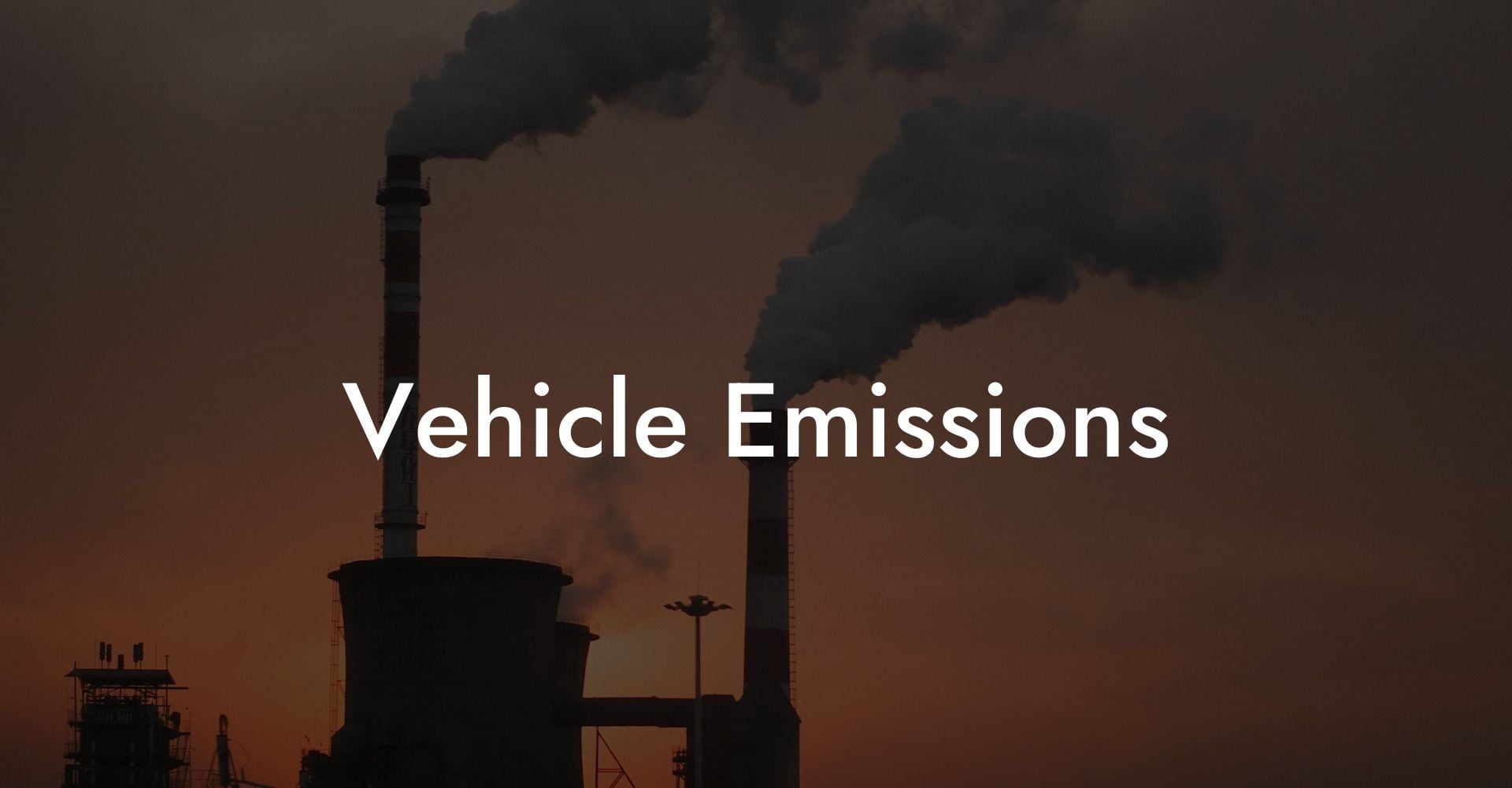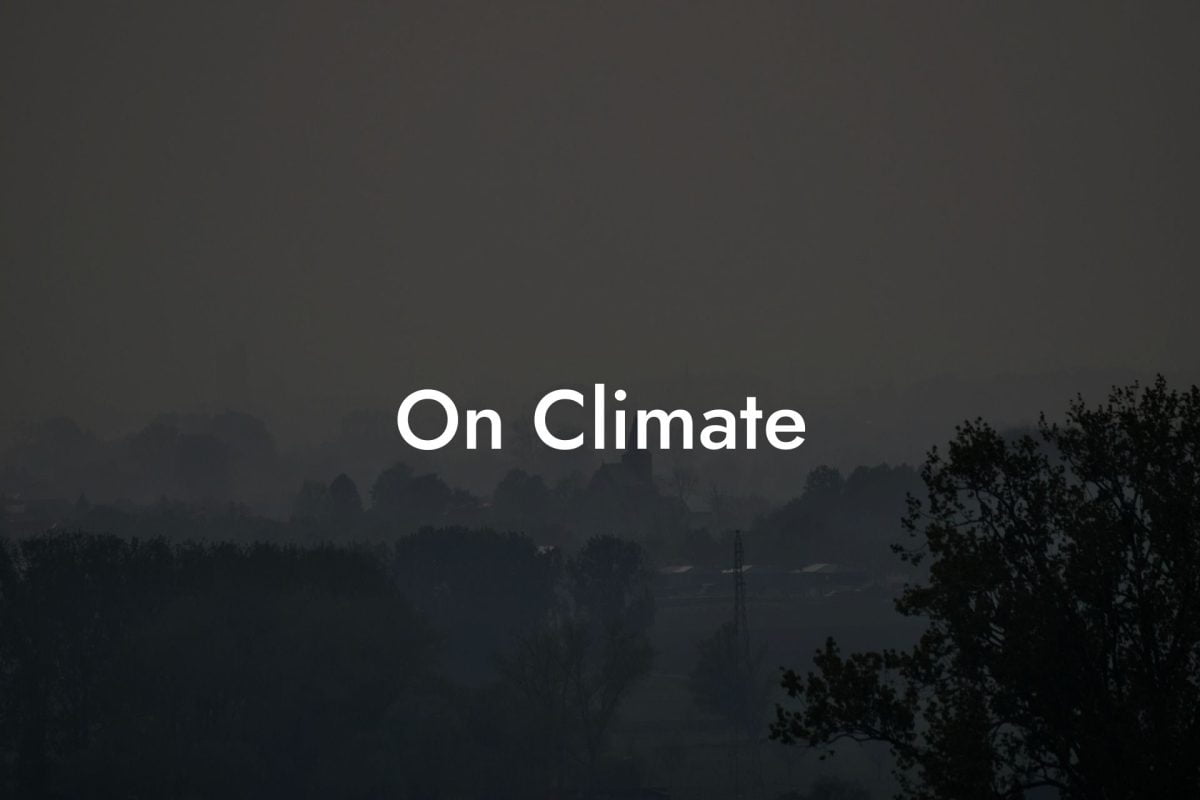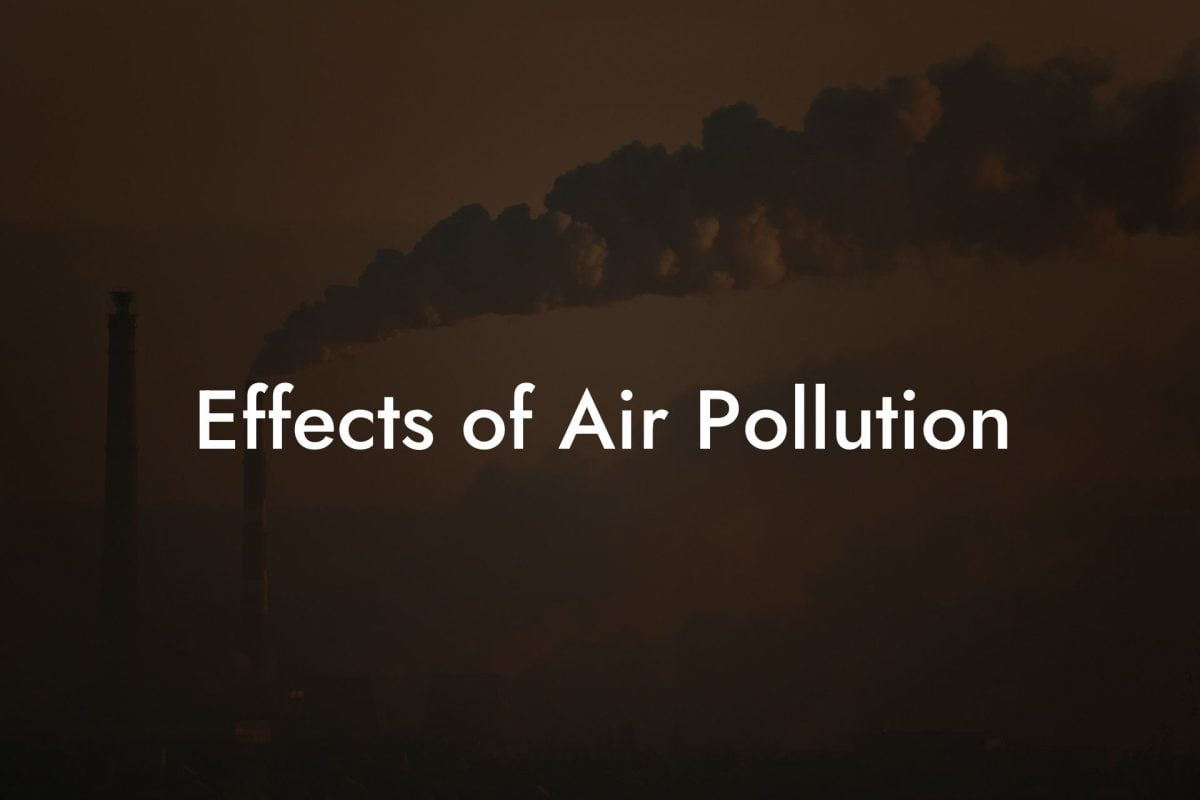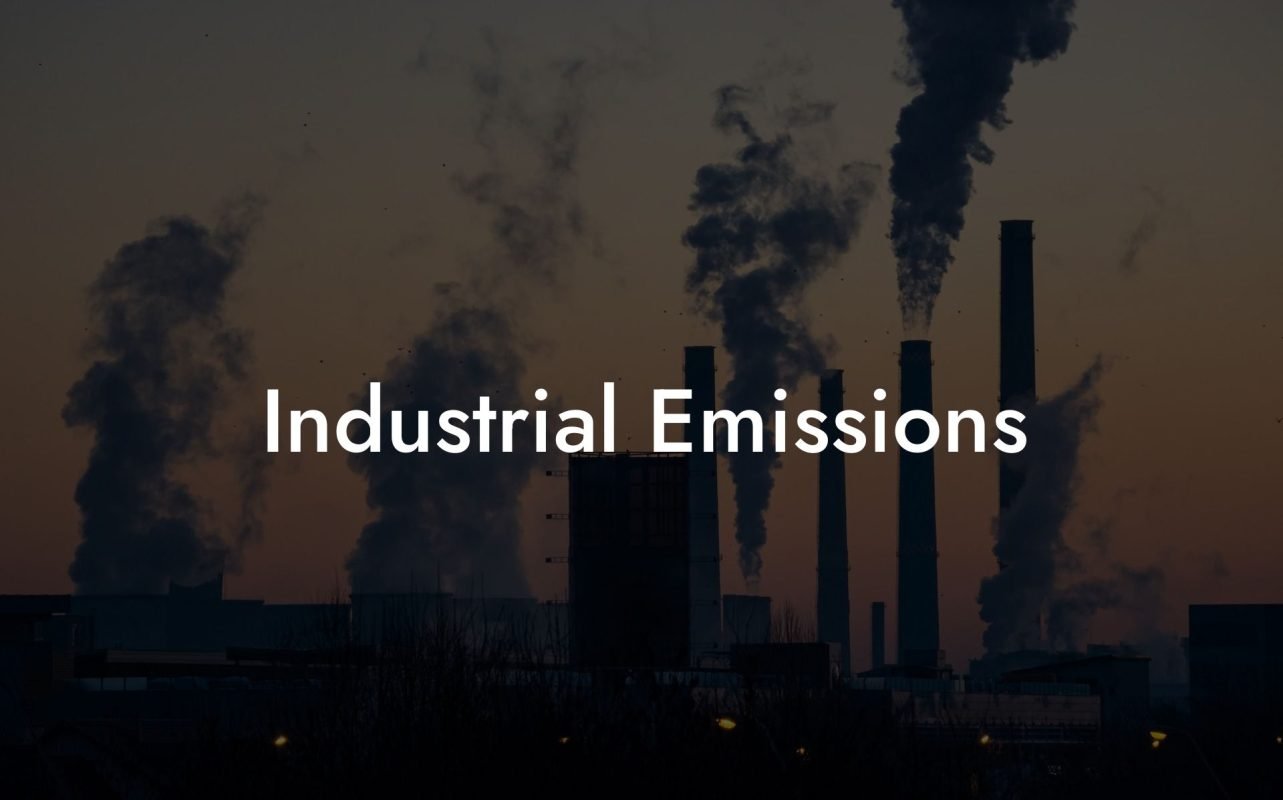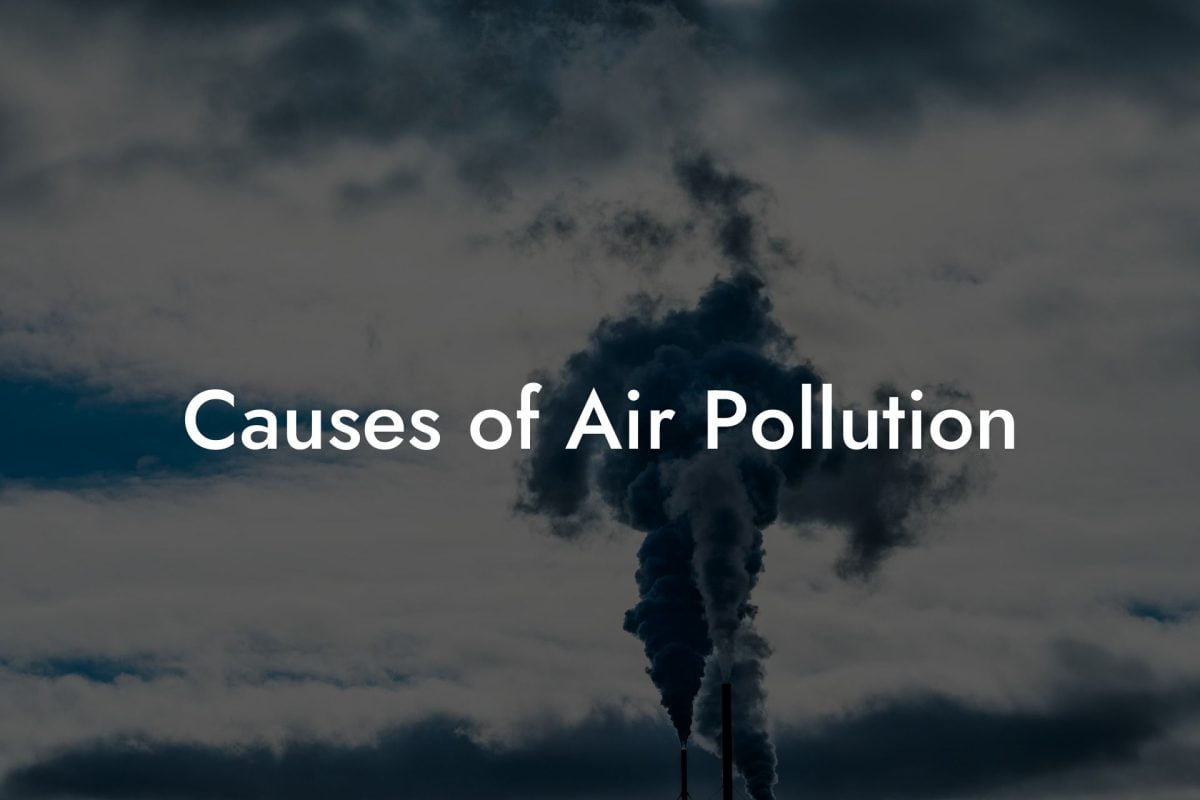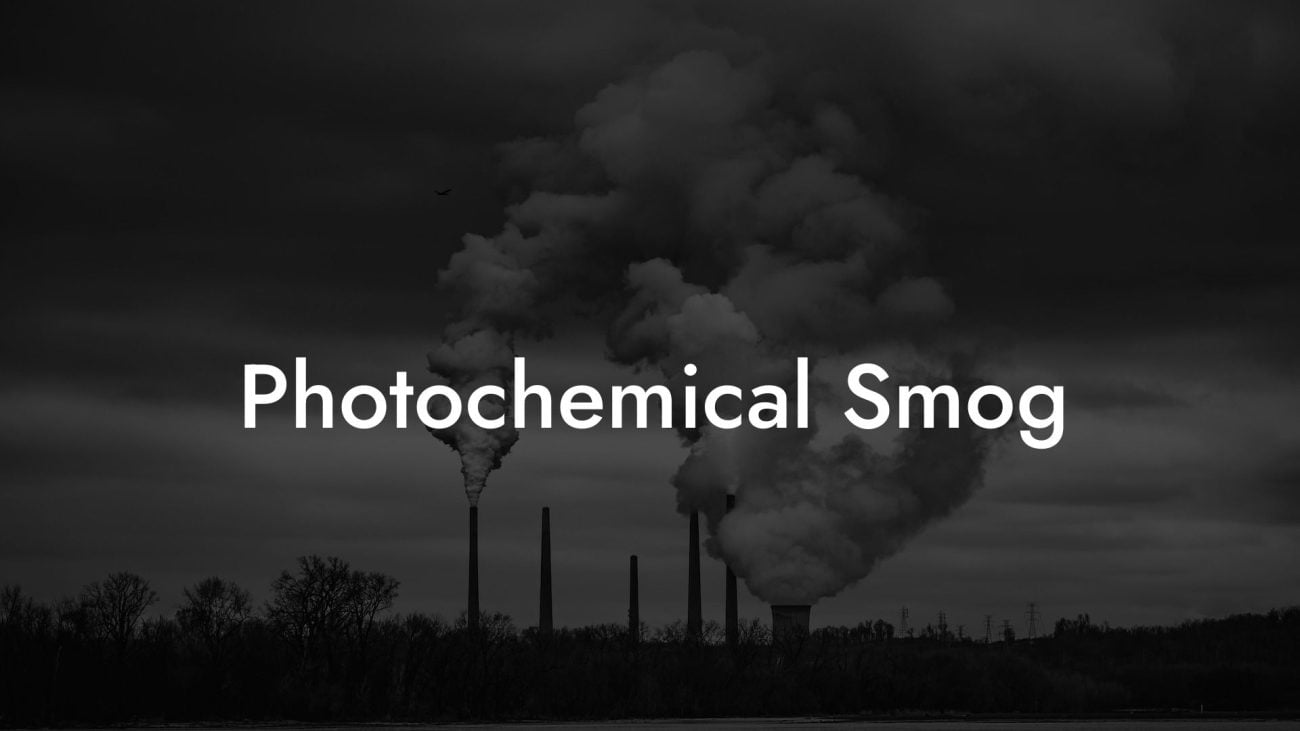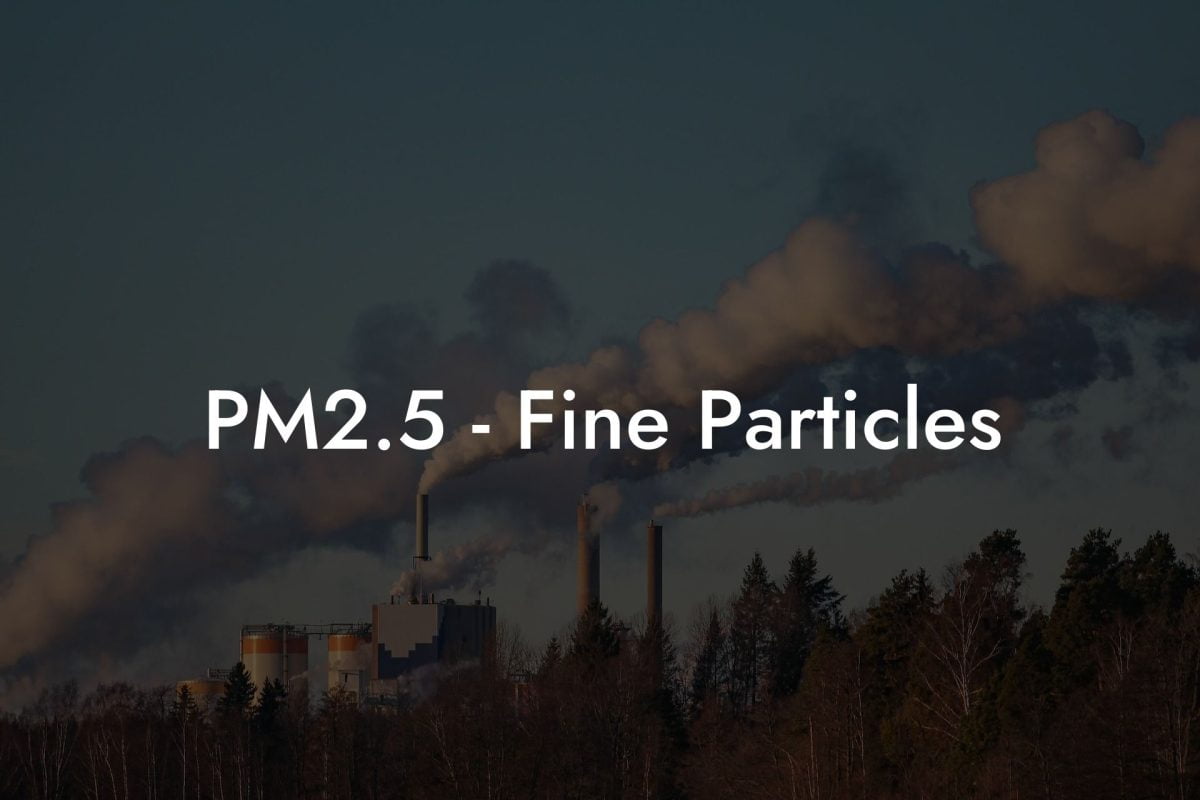Introduction to Vehicle Emissions
Vehicle emissions are a significant source of air pollution, particularly in urban areas. The combustion of fuel in cars, trucks, buses, and motorcycles releases a variety of pollutants that have substantial impacts on air quality and public health.
Overview of Emissions from Vehicles
Emissions from vehicles include a range of harmful pollutants, such as nitrogen oxides (NOx), carbon monoxide (CO), particulate matter (PM), volatile organic compounds (VOCs), and greenhouse gases like carbon dioxide (CO2).
Types of Vehicle Emissions
Exhaust Emissions
These are emissions released directly from the vehicle's exhaust system and include NOx, CO, PM, VOCs, and CO2.
Non-Exhaust Emissions
Non-exhaust emissions include particulate matter from tire and brake wear, as well as road dust resuspended by traffic.
Impact of Vehicle Emissions on Health
Respiratory and Cardiovascular Diseases
Exposure to pollutants from vehicle emissions can lead to respiratory problems, exacerbate asthma, and contribute to cardiovascular diseases.
Long-term Health Effects
Chronic exposure to high levels of vehicle emissions increases the risk of lung cancer and other serious health conditions.
Environmental Effects
Air Quality Degradation
Vehicle emissions significantly contribute to the degradation of air quality, particularly in densely populated urban areas.
Contribution to Climate Change
Greenhouse gases from vehicles, especially CO2, are major contributors to global warming and climate change.
Monitoring and Regulation
Emission Standards
Governments implement emission standards for vehicles to limit the amount of pollutants they can legally emit.
Vehicle Testing and Certification
Regular testing and certification of vehicles ensure compliance with emission standards.
Strategies to Reduce Vehicle Emissions
Cleaner Fuels
Using cleaner fuels, such as low-sulfur diesel and biofuels, can reduce harmful emissions from vehicles.
Advanced Engine Technologies
Modern vehicles are equipped with advanced engine technologies and emission control systems that reduce pollutant emissions.
Electric and Hybrid Vehicles
The adoption of electric and hybrid vehicles is a key strategy in reducing vehicle emissions, as they produce fewer or no exhaust emissions.
Vehicle Emissions in the UK
Current Challenges
The UK faces challenges in reducing vehicle emissions, particularly in major urban centers and high-traffic areas.
Policies and Initiatives
The UK government has implemented policies such as low emission zones, incentives for electric vehicles, and stricter emission standards to address vehicle emissions.
UK Air Pollution: Your Comprehensive Source for Emission Data
Extensive Database on Vehicle Emissions
UK Air Pollution offers an in-depth database of vehicle emission data across the UK, including trends, analyses, and regional variations.
Why UK Air Pollution?
Our platform provides accurate, comprehensive, and accessible information on vehicle emissions, making it an invaluable tool for researchers, policymakers, environmental professionals, and the public.
Enhancing Air Quality Projects and Research
With UK Air Pollution, gain detailed insights into vehicle emissions and their impact, supporting your initiatives in air quality management, research, and policy development in the UK.
Frequently Asked Questions
What Are Vehicle Emissions?
Vehicle emissions are pollutants released into the atmosphere from the exhaust of motor vehicles. These emissions are a major source of air pollution and contribute to environmental and health issues.
What Types of Pollutants Do Vehicles Emit?
Vehicles emit a range of pollutants including carbon monoxide (CO), nitrogen oxides (NOx), particulate matter (PM), volatile organic compounds (VOCs), sulfur dioxide (SO2), and greenhouse gases like carbon dioxide (CO2).
How Do Vehicle Emissions Affect Air Quality?
Vehicle emissions significantly deteriorate air quality by increasing the concentration of harmful pollutants in the atmosphere, contributing to smog formation and health hazards.
What Are the Health Risks Associated with Vehicle Emissions?
Health risks include respiratory issues, cardiovascular diseases, aggravated asthma, and in severe cases, increased risks of lung cancer and premature death.
How Do Gasoline Vehicles Contribute to Air Pollution?
Gasoline vehicles contribute to air pollution mainly through the burning of gasoline, which releases CO, NOx, VOCs, PM, and CO2, among other pollutants.
What Are the Environmental Impacts of Vehicle Emissions?
Environmental impacts include contribution to climate change, acid rain, water and soil contamination, and harm to wildlife and vegetation.
How Do Diesel Vehicles Differ in Emissions from Gasoline Vehicles?
Diesel vehicles typically emit higher levels of NOx and particulate matter but may produce less CO2 and CO compared to gasoline vehicles.
Can Electric Vehicles Help Reduce Air Pollution?
Electric vehicles can help reduce air pollution as they emit no tailpipe pollutants, although the overall environmental impact depends on how the electricity powering them is generated.
What is Carbon Monoxide and How is it Produced by Vehicles?
Carbon monoxide is a colorless, odorless gas produced from the incomplete combustion of fuel in vehicles. It is harmful to humans when inhaled in high concentrations.
How Do Vehicle Emissions Contribute to Climate Change?
Vehicle emissions contribute to climate change by releasing significant amounts of greenhouse gases, particularly CO2, which trap heat in the Earth's atmosphere.
What Are Nitrogen Oxides and What is Their Impact?
Nitrogen oxides are a group of gases produced from vehicle emissions that contribute to the formation of smog and acid rain and can lead to respiratory problems.
How Does Vehicle Maintenance Affect Emissions?
Proper vehicle maintenance can significantly reduce emissions by ensuring that engines run efficiently and pollution control systems function properly.
What Role Do Catalytic Converters Play in Reducing Emissions?
Catalytic converters reduce emissions by converting harmful pollutants in vehicle exhaust into less harmful substances like nitrogen gas, water vapor, and carbon dioxide.
Can Traffic Congestion Increase Vehicle Emissions?
Yes, traffic congestion can increase vehicle emissions as idling engines and stop-and-go traffic
lead to more fuel consumption and higher emission rates per mile traveled compared to smooth driving conditions.
How Do Hybrid Vehicles Impact Emission Levels?
Hybrid vehicles, which use a combination of an internal combustion engine and an electric motor, generally produce lower emissions than conventional gasoline or diesel vehicles.
What Are Particulate Matter Emissions from Vehicles?
Particulate matter emissions from vehicles include tiny particles released from exhaust gases and from the wear and tear of brakes and tires, which can have serious health effects when inhaled.
How Are Vehicle Emissions Regulated?
Vehicle emissions are regulated by government standards that set limits on the amount of specific pollutants that can be emitted by vehicles, encouraging the use of cleaner technologies.
What Are Zero-Emission Vehicles (ZEVs)?
Zero-emission vehicles are vehicles that emit no tailpipe pollutants, typically electric vehicles (EVs) and hydrogen fuel cell vehicles.
How Can Public Transportation Reduce Vehicle Emissions?
Public transportation can reduce vehicle emissions by decreasing the number of individual vehicles on the road, leading to lower overall emissions and improved air quality.
What is the Impact of Vehicle Emissions on Urban Areas?
In urban areas, vehicle emissions are a major contributor to air pollution and smog, impacting the health of city residents and the overall quality of urban life.
How Does Fuel Type Influence Vehicle Emissions?
Different fuel types, such as gasoline, diesel, biofuel, and natural gas, have varying impacts on emissions, with some producing more of certain pollutants than others.
What Measures Can Drivers Take to Reduce Vehicle Emissions?
Drivers can reduce vehicle emissions by maintaining their vehicles, driving efficiently, reducing idling, using public transportation, and considering cleaner vehicle options.
What Innovations Are Being Developed to Reduce Vehicle Emissions?
Innovations include the development of more efficient engines, alternative fuel vehicles, improved emission control technologies, and advancements in electric and hydrogen fuel cell vehicles.
How Do Vehicle Emissions Affect Children and the Elderly?
Children and the elderly are more vulnerable to the adverse health effects of vehicle emissions due to their developing or weakened respiratory systems, increasing their risk of health issues.
Can Planting Trees and Urban Greenery Help Mitigate Vehicle Emissions?
Planting trees and increasing urban greenery can help mitigate vehicle emissions by absorbing CO2 and other pollutants, thereby improving urban air quality.


